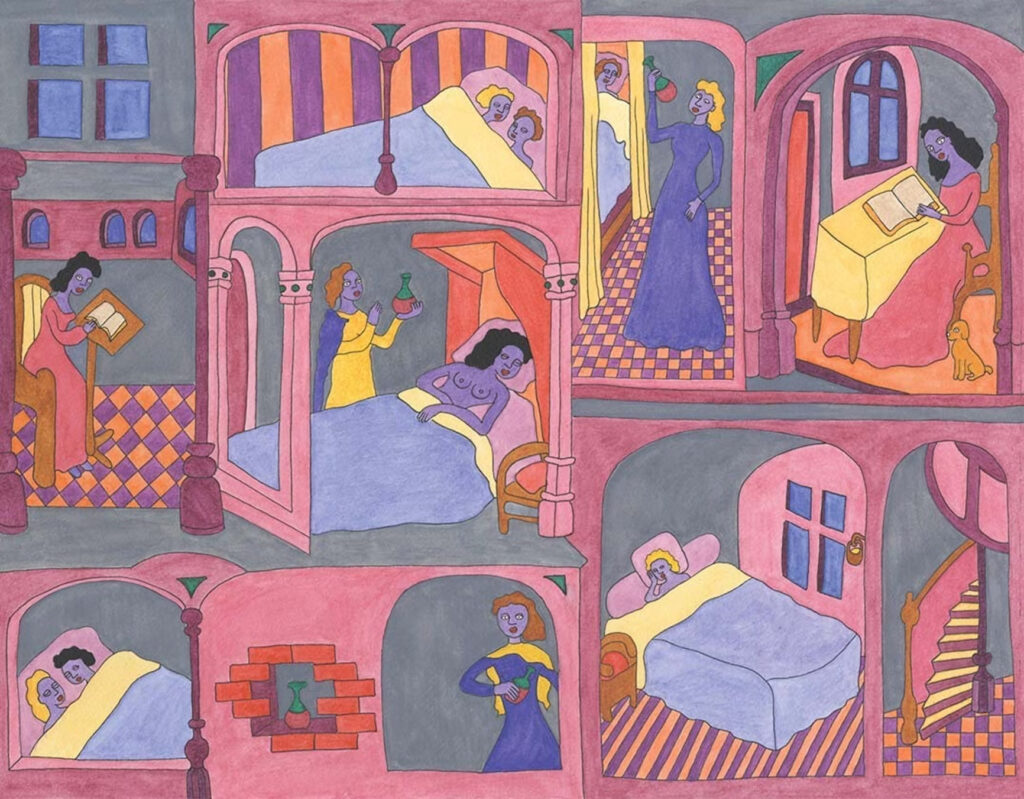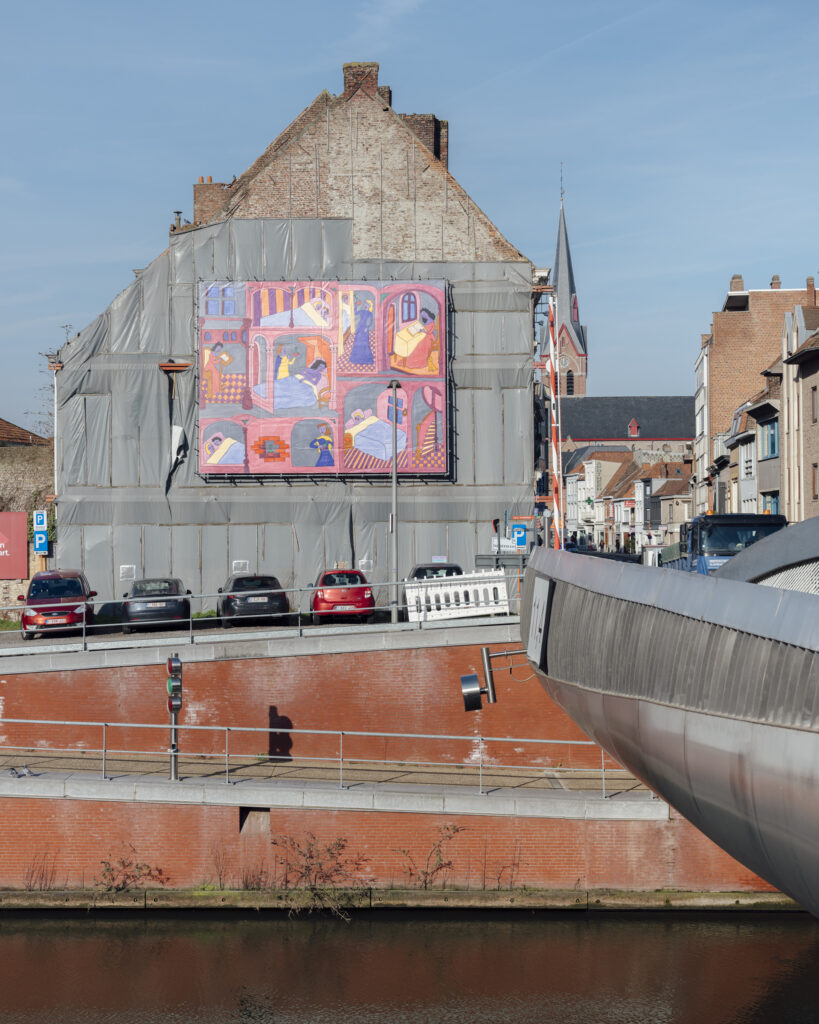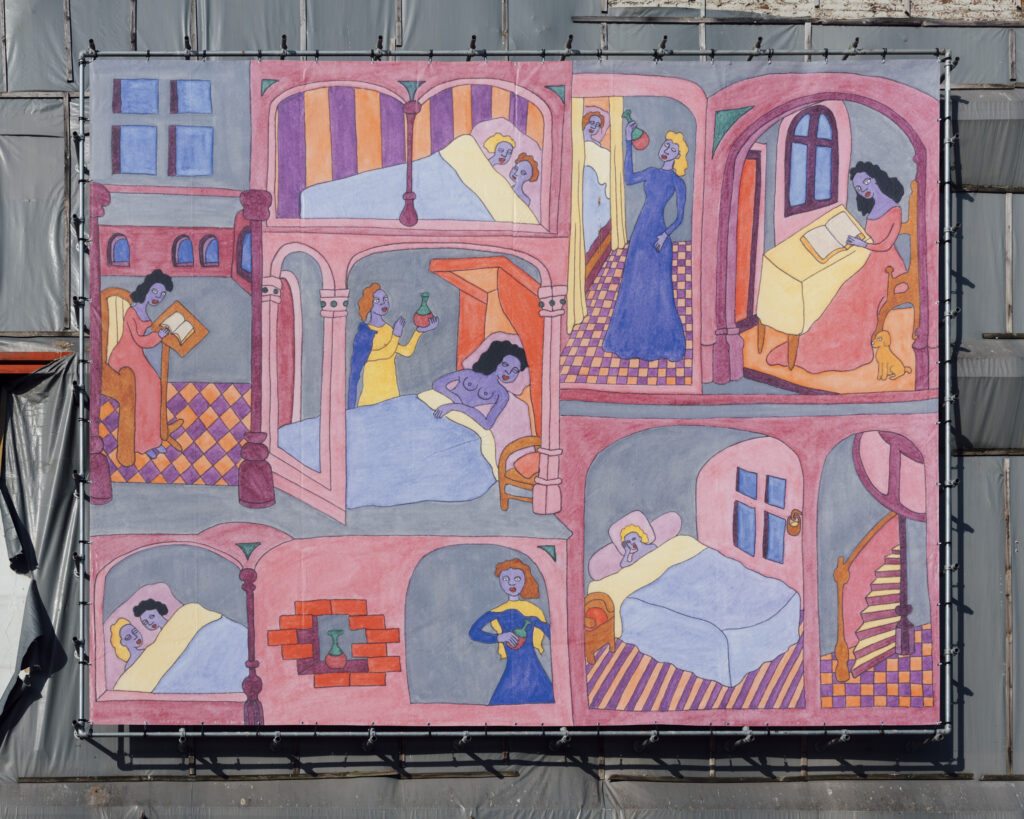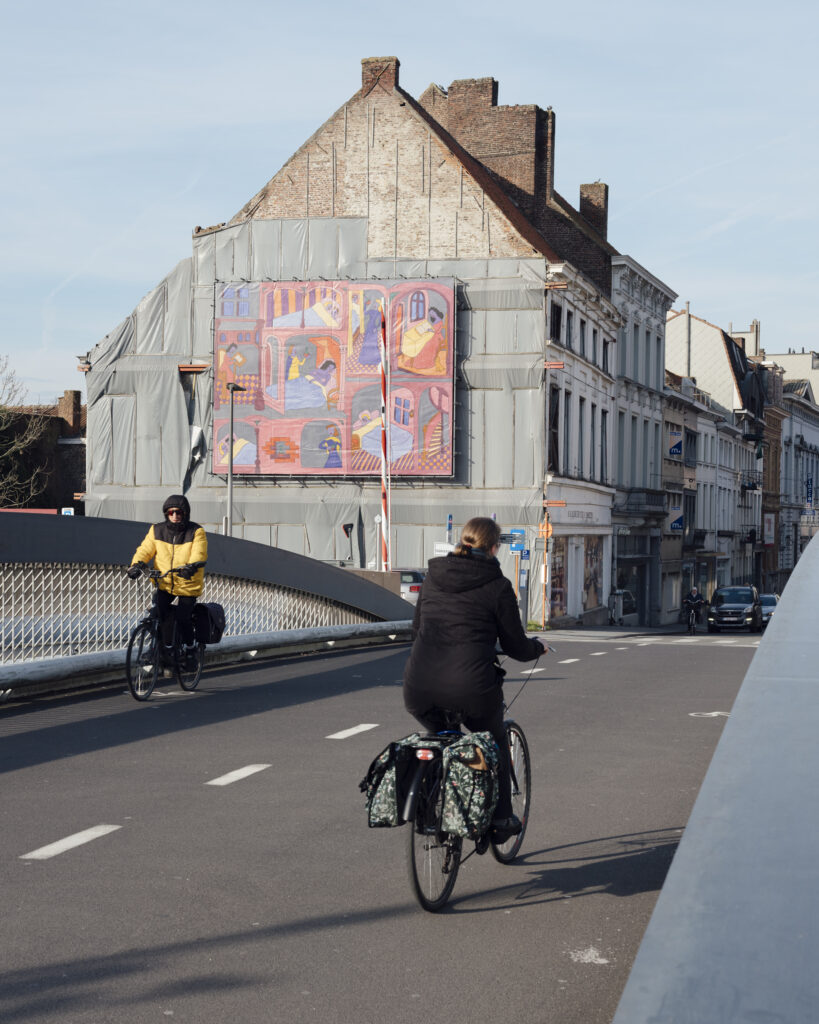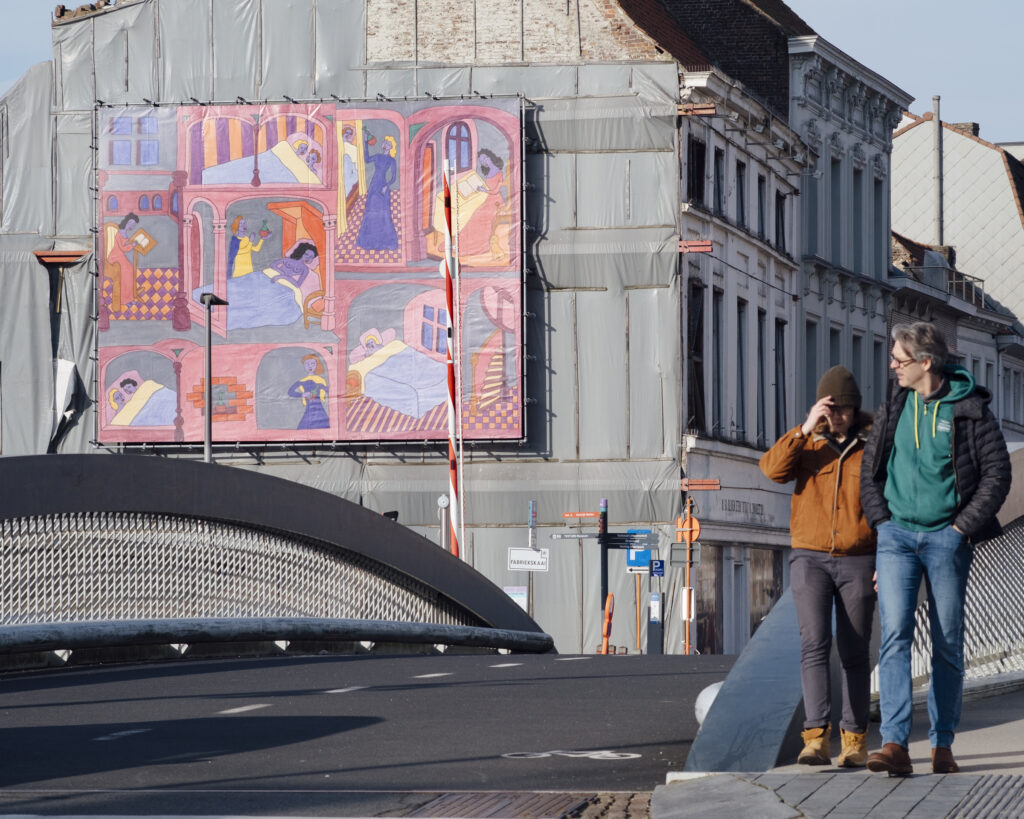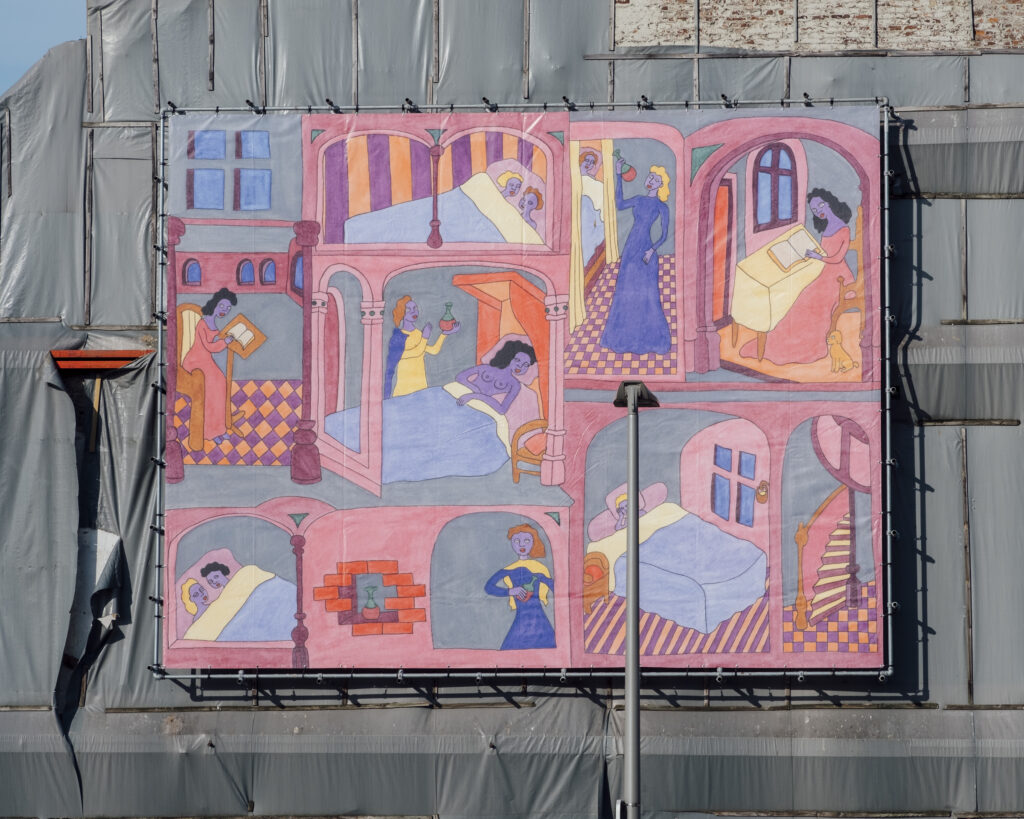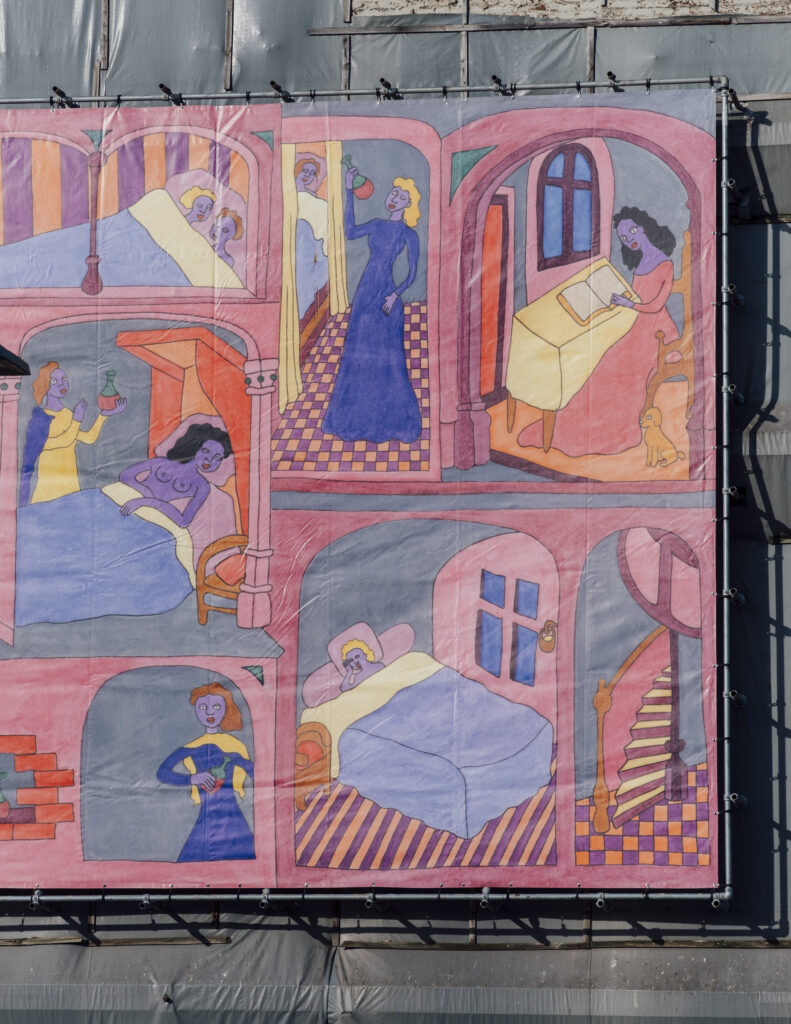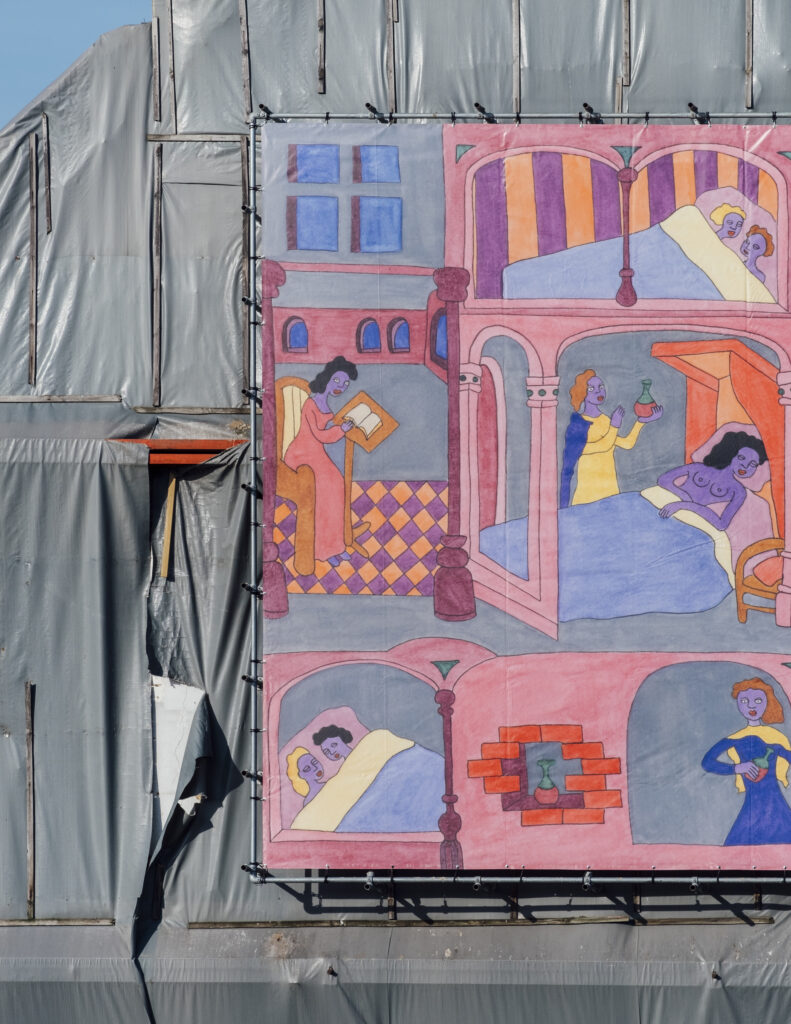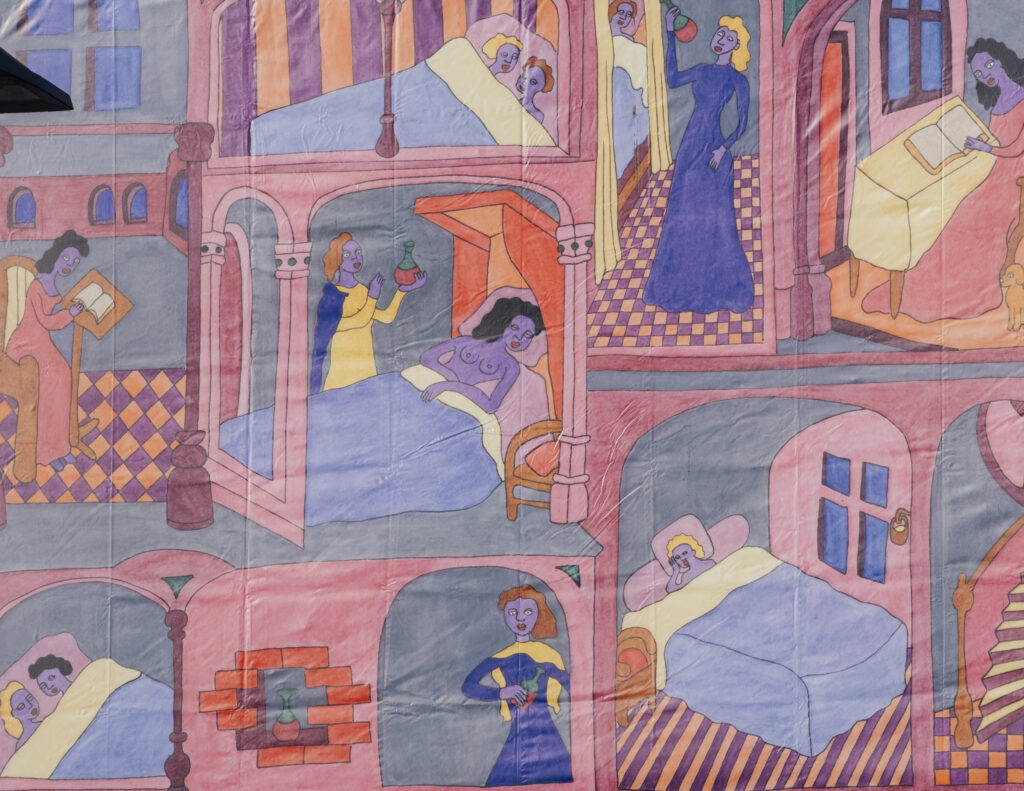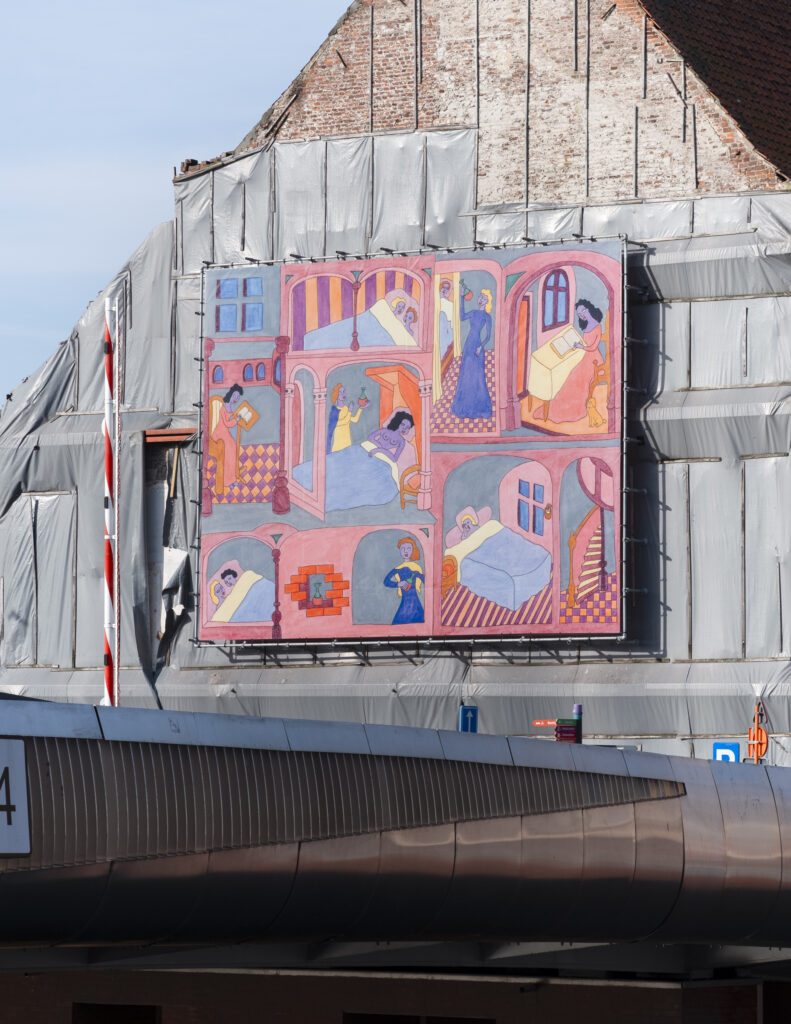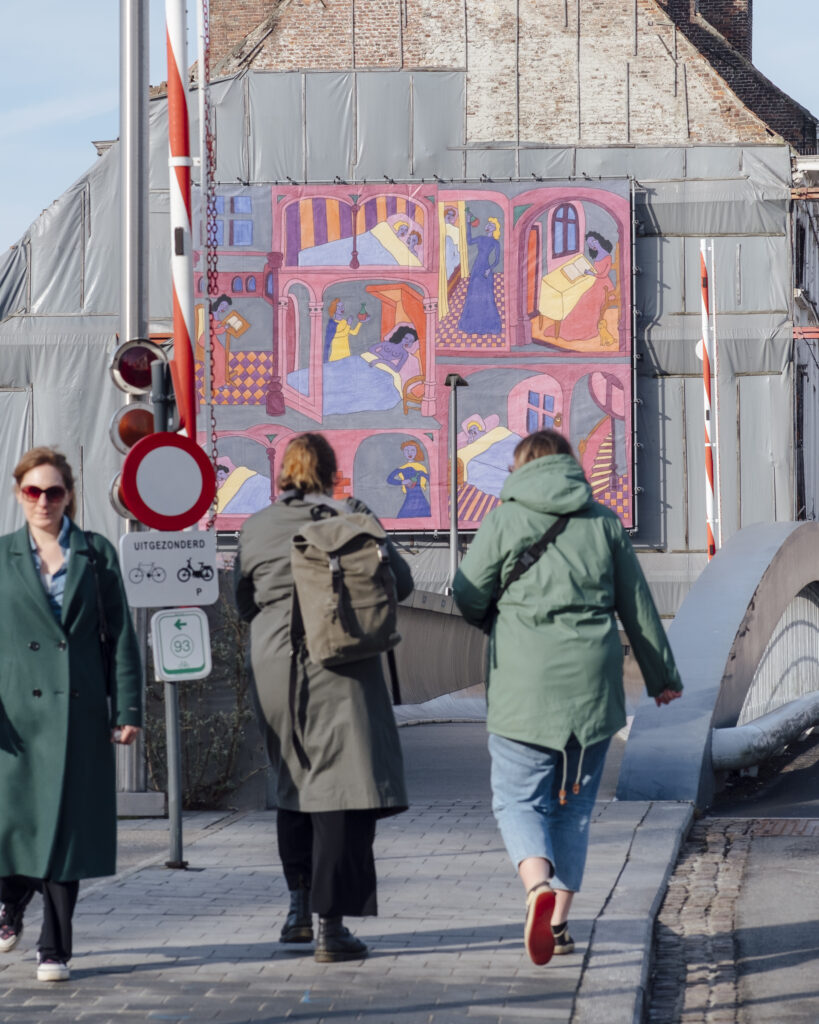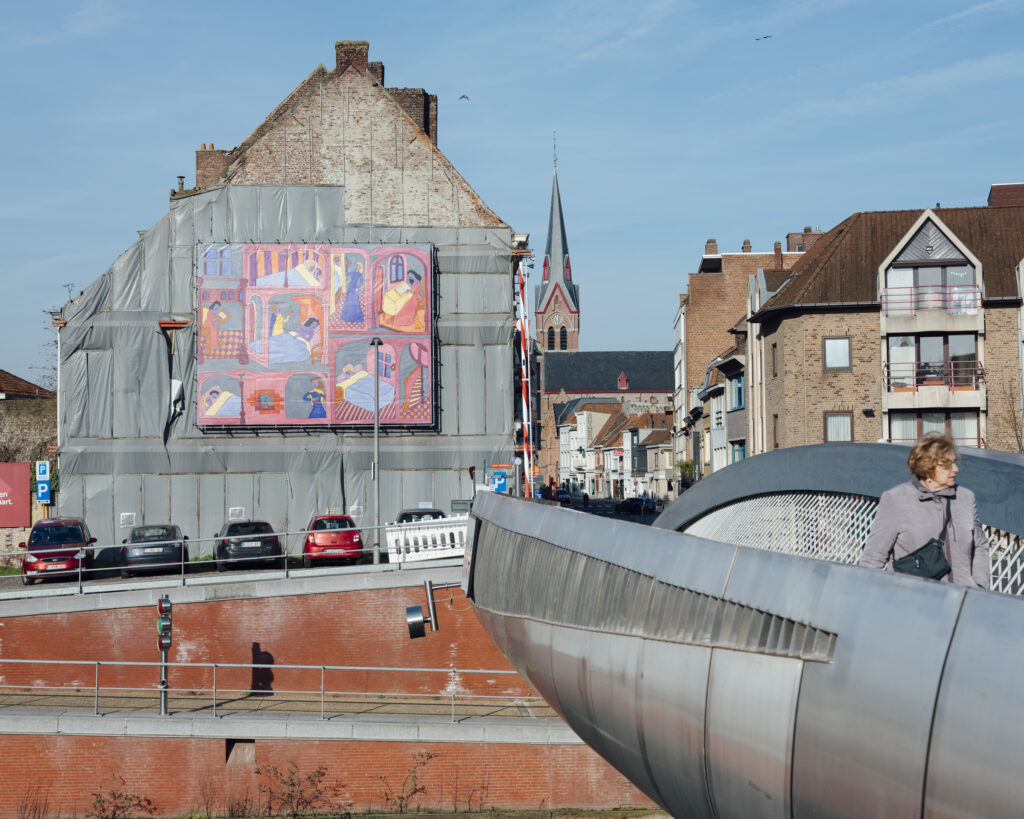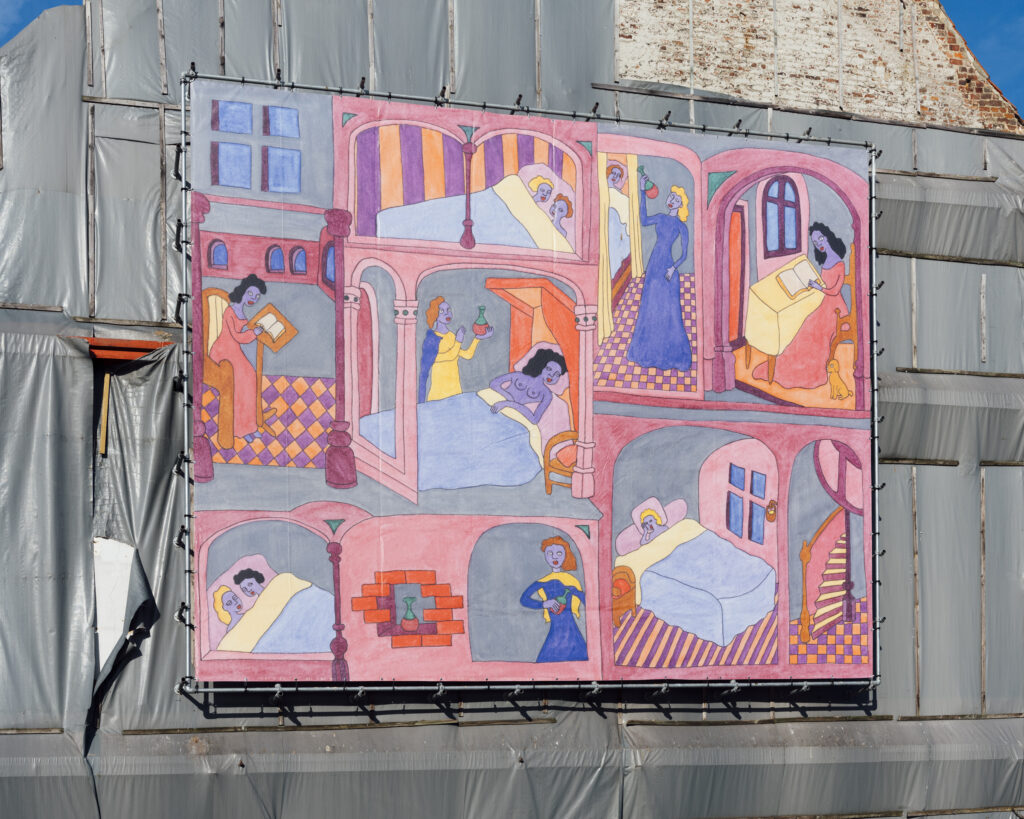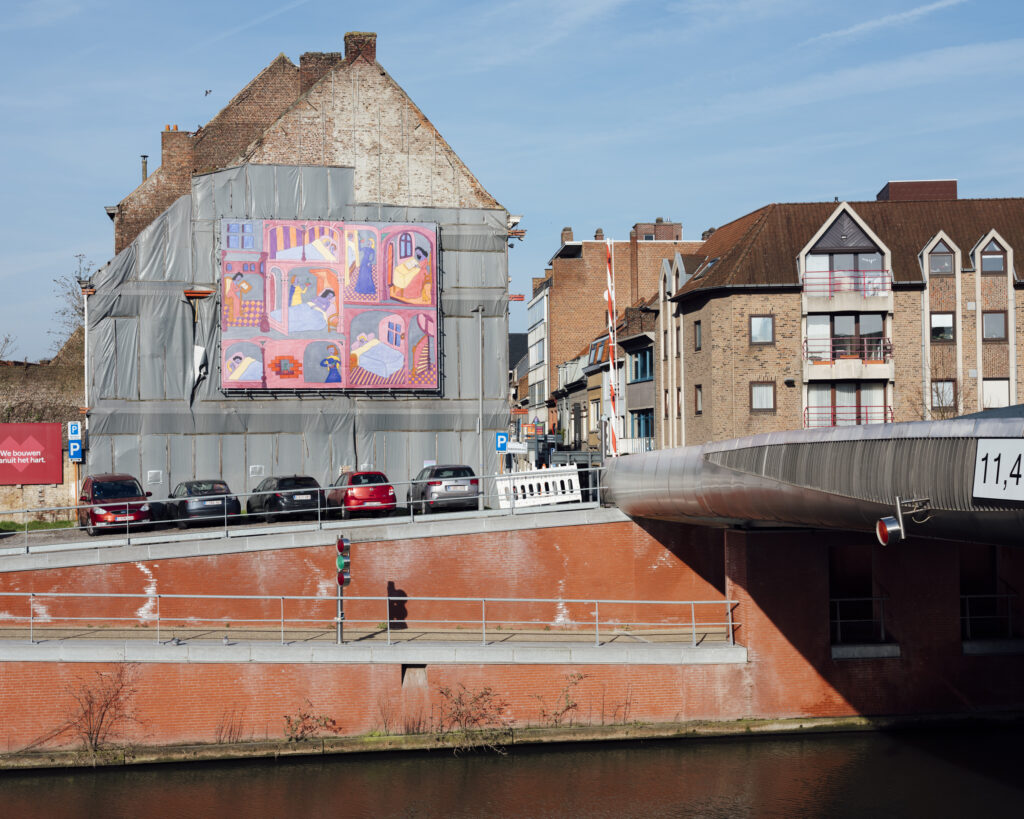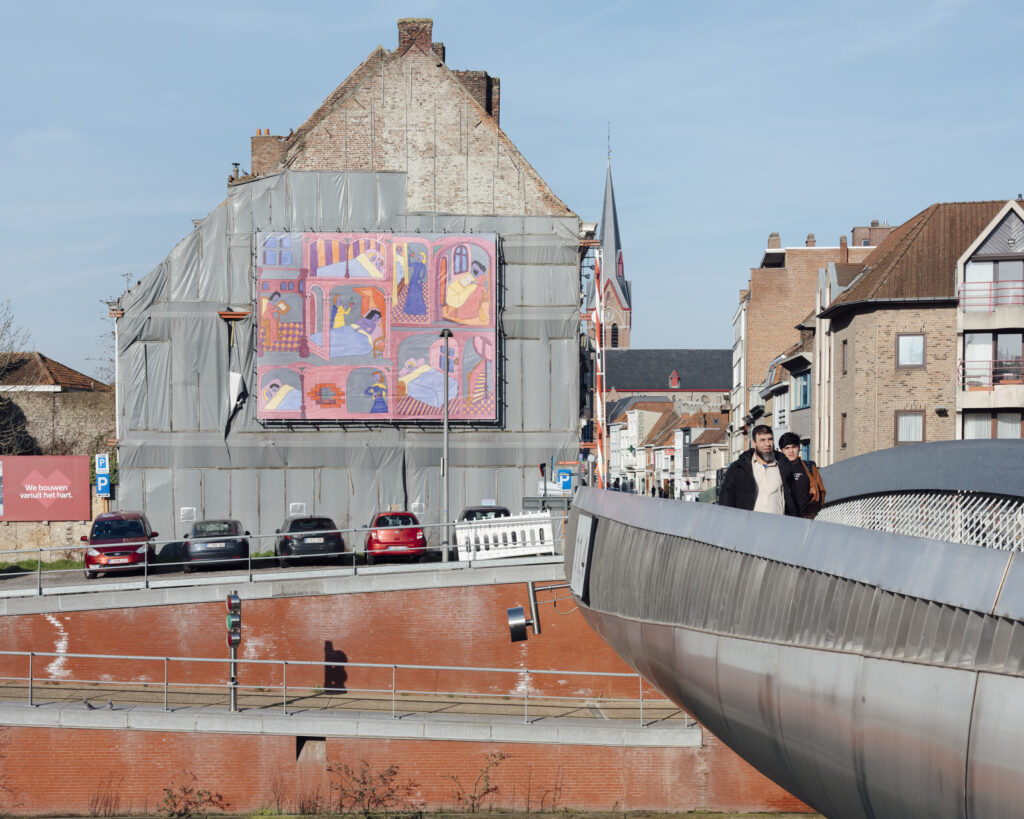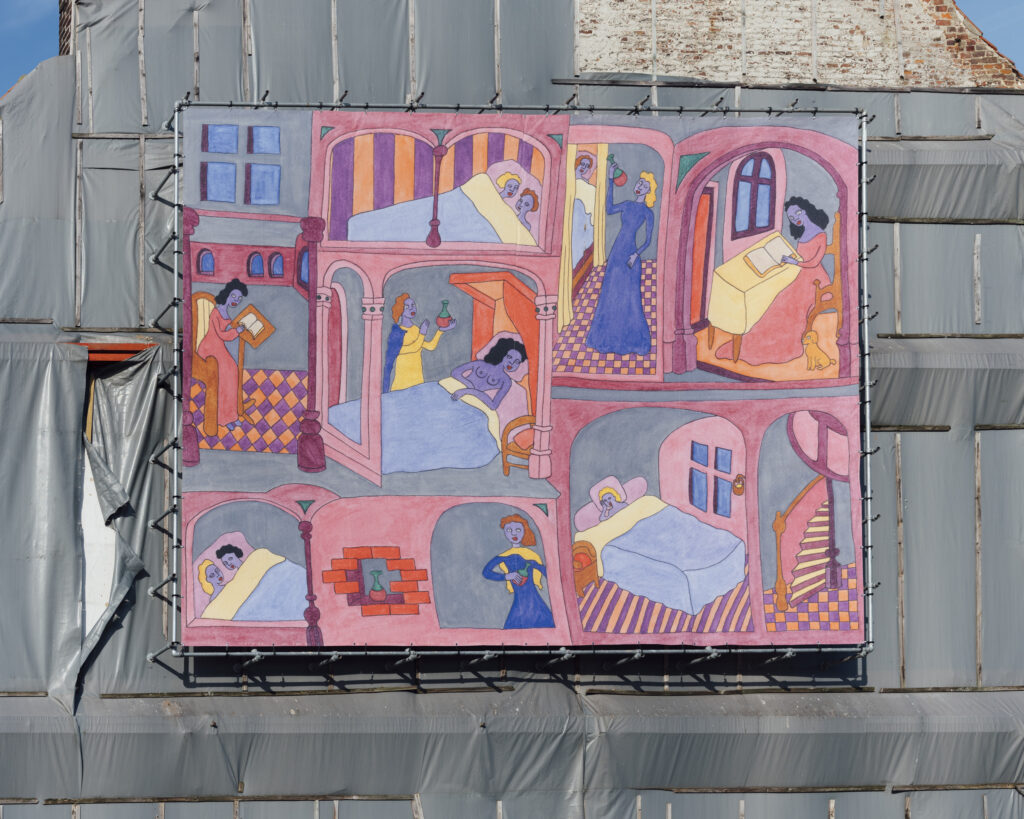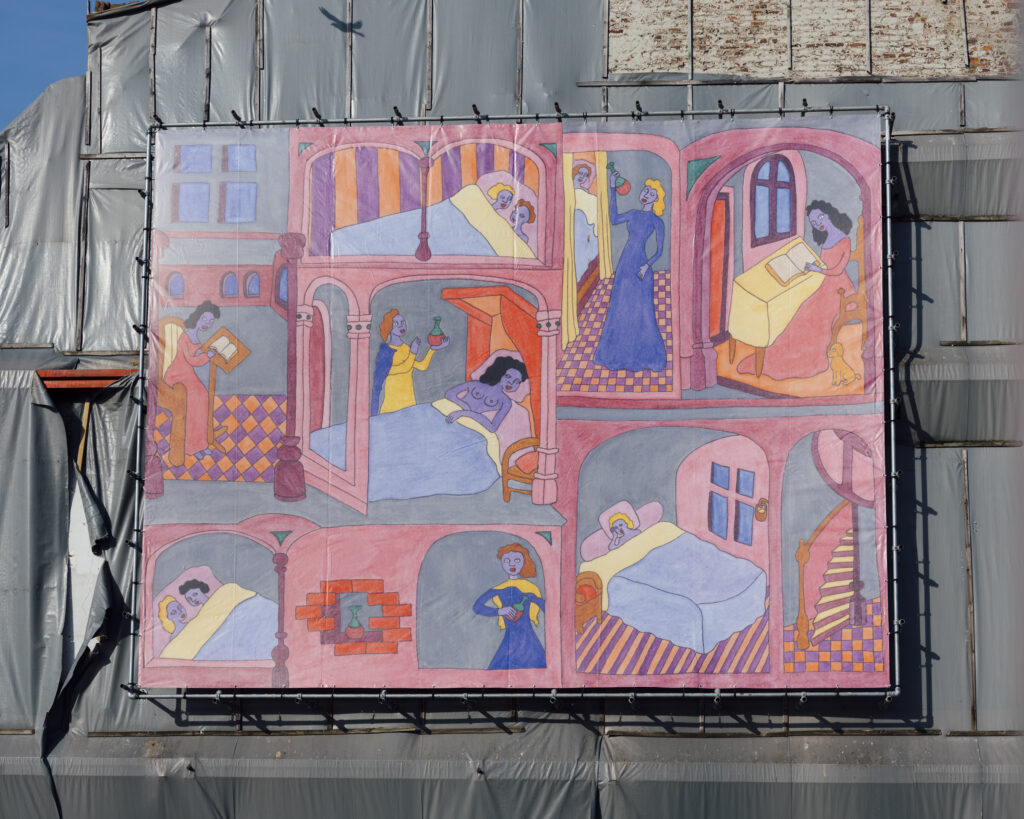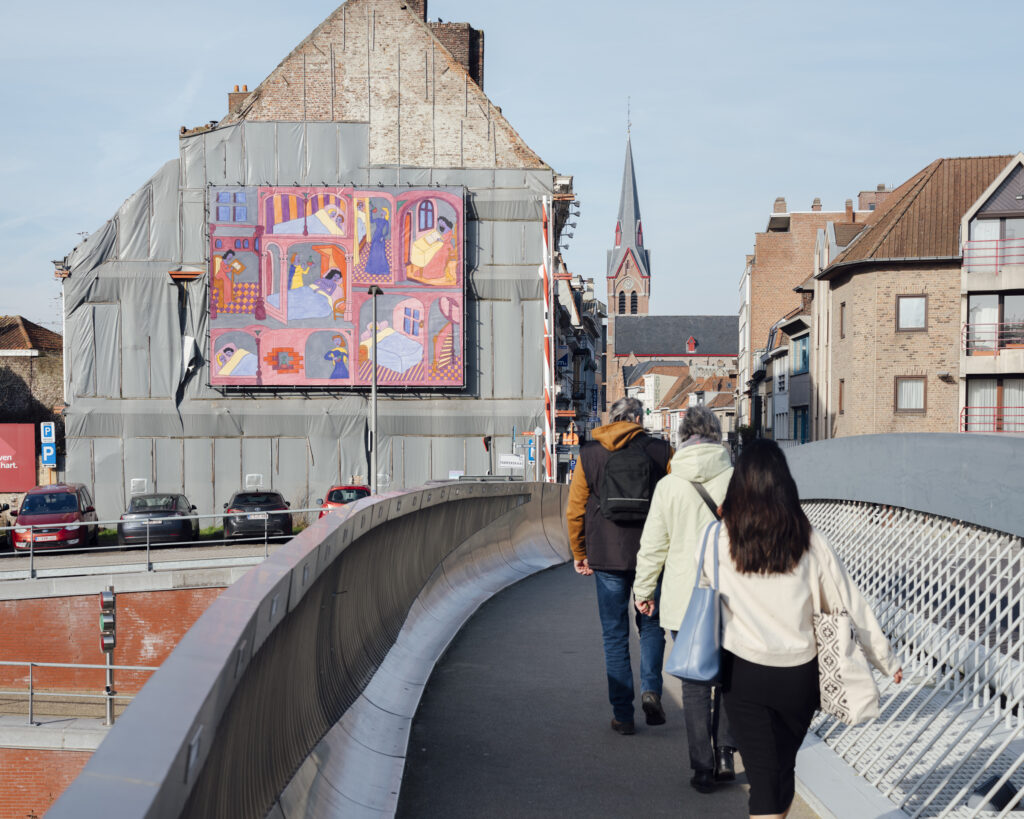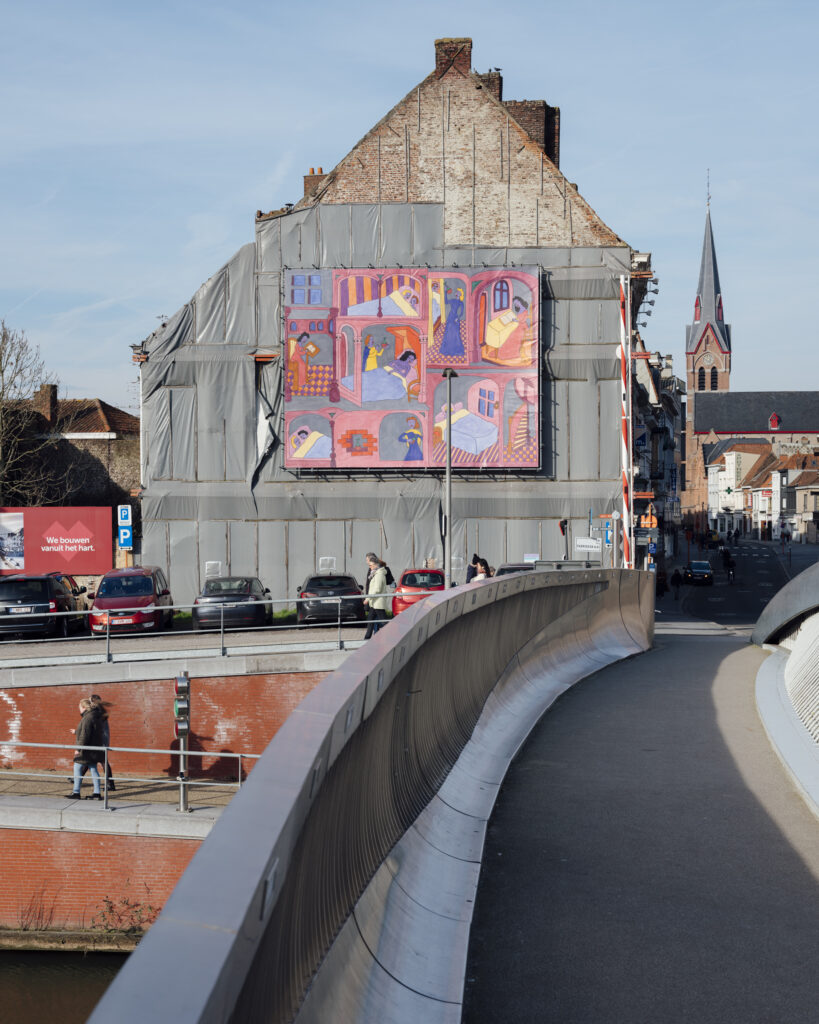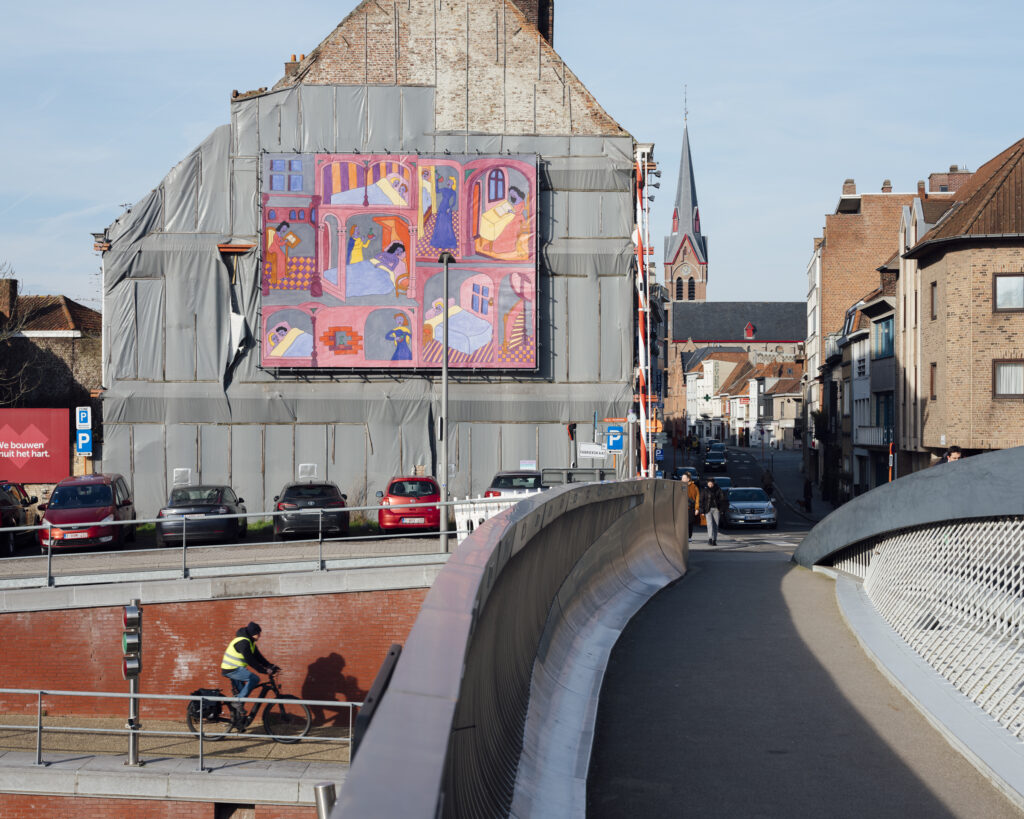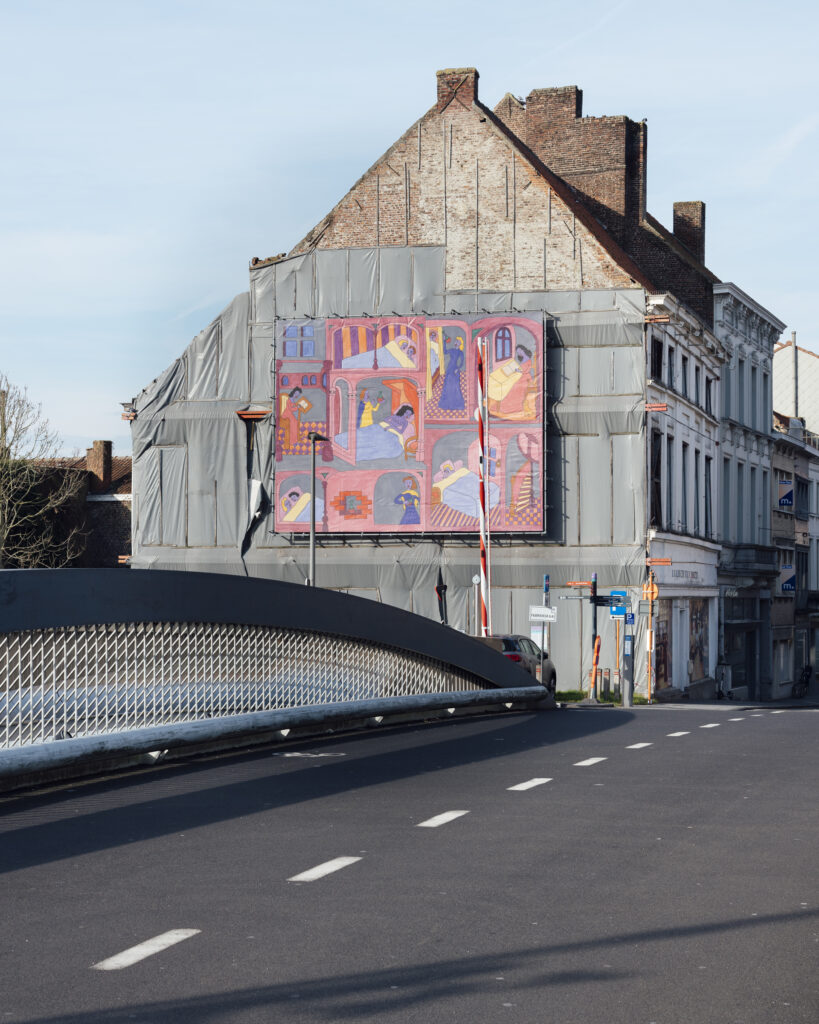LAURIE CHARLES – The Caregivers, 2022
Billboard Series Budabrug, Kortrijk
25/01/2024 – 16/06/2024
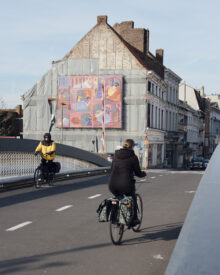
Laurie Charles is een verteller van speculatieve verhalen. Hierin komt een wereld in beeld die sterk verschilt van de alledaagse realiteit. In deze verhalen wordt gespeculeerd over hoe de wereld en de maatschappij er anders hadden kunnen uitzien. Charles vertelt deze verhalen zowel via beeld als via taal, met een sterk feministisch perspectief.
Haar artistieke praktijk is veelzijdig: ze schildert, maakt films, werkt met textiel. Je zou haar praktijk holistisch kunnen noemen – een benadering waarin alles deel uitmaakt van een zelfde geheel en dus onlosmakelijk met elkaar verbonden is. Ze brengt verschillende disciplines, ideeën, publieken en technieken samen tot een fictief verhaal waarin diepgaand onderzoek centraal staat.
Het herschrijven van de geschiendenis uit een vrouwelijk standpunt is een duidelijk terugkerend thema doorheen Charles’ werk. Zo vertelt haar film Le Chalet (2018) het verhaal van vier vrouwen die zich terugtrekken in de natuur. Ver weg van het gestandaardiseerde stedelijke leven hopen ze een toevluchtsoord te vinden voor bezinning en gemeenschap. Gaandeweg verandert hun uptopie echter in een nachtmerrie. Charles verweeft documentaire, science fiction en horror om het verhaal van 19de eeuwe Amerikaanse utopische communes kritisch te benaderen en de strikte scheiding tussen natuur en cultuur aan de kaak te stellen.
Laurie Charles’ praktijk focust sterk op zorg voor elkaar. Zelf lijdt Laurie Charles aan een auto-imuun ziekte. Misschien net daardoor staan het lichaam en hoe onze samenleving ermee omgaat zo centraal in haar werk. Ze maakt grote textielwerken van anatomische doorsnedes, en zachte sculpturen in de vorm van organen en ingewanden. Deze sculpturen zijn handgemaakt en zorgvuldig met de hand beschilderd. Deze werken verhouden zich elk op hun eigen manier het lichaam van de toeschouwer. Zo zijn er kussens om te ondersteunen, gordijnen die ver- en onthullen, en rekwisieten die gebruikt worden in performatieve context.
Deze twee rode draden (een feministisch standpunt en een focus op zorg voor elkaar) komen samen in Charles’ meest recente werk. Dit bestaat uit herwerkingen van middeleeuwse gravures die de geschiedenis van de geneeskunde verbeelden. De kunstenaar behoudt in grote lijnen de composities, maar bevolkt de prenten met vrouwen, en kleurt de scenes in met verleidelijke pastelkleuren. Voor Billboard Series maakte Laurie Charles een schilderij waarin ze verschillende gravures, scènes, en perspectieven combineert. Ze vertelt zo over het utopisch idee van een gesloten gemeenschap van vrouwen, maar ook over de historische positie van de vrouw, die – zeker buiten de stad – aangewezen was op zichzelf en de natuur om ziektes te overwinnen. Het werk herschrijft het verhaal van zelfstandige vrouwen die het patriarchaat marginaliseert, en beschuldigt van hekserij. We zien vrouwen die zorgen en geneeskundig advies geven, altijd in relatie tot elkaar – niemand is alleen afgebeeld.
Laurie Charles toonde haar werk internationaal, onder meer in Wiels, Brussel; Terzo Fronte, Roma; Efremidis Gallery, Berlijn; Grazer Kunstverein, Graz; CIAP Kunstverein, Hasselt; 1646 – projectruimte voor hedendaagse kunst, Den Haag; Nanjing International Art Festival; Beursschouwburg, Brussel; en Le Commissariat, Parijs.
Laurie Charles is a teller of speculative stories. In these, a world comes into focus that is very different from everyday reality. These stories speculate on how the world and society could have been different. Charles tells these stories through both image and language, with a strong feminist perspective.
Her artistic practice is multifaceted: she paints, makes films, works with textiles. You could call her practice holistic – an approach in which everything is part of the same whole and thus inseparable. She brings together different disciplines, ideas, audiences and techniques into a fictional story in which in-depth research is central.
Rewriting history from a female point of view is a clear recurring theme throughout Charles’ work. For example, her film Le Chalet (2018) tells the story of four women who retreat into nature. Far away from standardised urban life, they hope to find a haven for reflection and community. Gradually, however, their utopia turns into a nightmare. Charles interweaves documentary, science fiction and horror to critically examine the story of 19th-century American utopian communes and challenge the strict separation between nature and culture.
Laurie Charles’ practice focuses heavily on caring for each other. Laurie Charles herself suffers from an autoimmune disease. Perhaps that is precisely why the body and how our society treats it are so central to her work. She makes large textile works of anatomical sections and soft sculptures in the form of organs and intestines. These sculptures are handmade and carefully hand-painted. These works each relate to the viewer’s body in their own way. For instance, there are cushions to support, curtains that conceal and reveal, and props used in performative contexts.
These two common threads (a feminist point of view and a focus on caring for each other) come together in Charles’ most recent work. This consists of reworkings of medieval engravings depicting the history of medicine. The artist broadly retains the compositions but populates the prints with women, colouring the scenes with seductive pastel colours. For Billboard Series, Laurie Charles created a painting in which she combines different engravings, scenes, and perspectives. In doing so, she recounts the utopian idea of a closed community of women, but also the historical position of women, who – especially outside the city – relied on themselves and nature to overcome illnesses. The work rewrites the story of independent women whom the patriarchy marginalises, accusing them of witchcraft. We see women providing care and healing advice, always in relation to each other – no one is depicted alone.
Laurie Charles has shown her work internationally, including at Wiels, Brussels; Terzo Fronte, Roma; Efremidis Gallery, Berlin; Grazer Kunstverein, Graz; CIAP Kunstverein, Hasselt; 1646 – project space for contemporary art, The Hague; Nanjing International Art Festival; Beursschouwburg, Brussels; and Le Commissariat, Paris.
